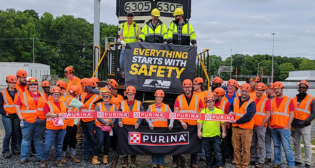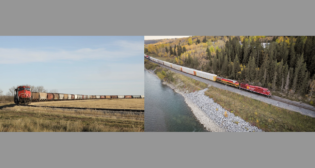
Getting the next generation on track
Written by Gordon Williams, Network Rail ConsultingWhat happens when you retire? I’m sure there are few things on everyone’s minds: that extra free time to look forward to, those hobbies you will now have time for, and all the places to visit. For a company, however, losing long-standing employees to retirement can be a difficult moment. Not only do they lose a valued colleague; a firm loses valuable institutional knowledge, experience and wisdom. The gap that is left behind is tangible and can really hurt business stability and growth.
All organizations face this critical strategic issue. However, in rail transit and the rail industry in general, the challenge is even more acute, as the loss of employees can present a very real safety risk. As the number of skilled personnel available to maintain railroads and rail transit systems decreases, the infrastructure left behind becomes less and less serviceable. As well as safety, this threatens economic growth, standards of living and, ultimately, public confidence in the industry.
“Upskilling” Through Apprenticeships
Training the next generation of railroad professionals is therefore vital if we are to address the safety risks fast approaching this country’s infrastructure. An effective way to do this is through introducing more apprenticeships, facilitating this next generation’s learning and competence development.
The benefits of apprenticeship schemes are threefold: they make good business sense; they have a real economic impact; and they offer an alternative path for those looking to develop their careers away from more-traditional education routes.
Value for Business
As if to underline the importance and significance of the apprenticeship program, in 2016 the U.K. government introduced a new transport skills strategy that set out how the government would deliver plans to create 30,000 apprenticeships in the road and rail sector by 2020. This strategy set apprenticeship targets to be written into contracts delivering the government’s record rail and road investment program.
Value for the Economy
The legacy of expertise (and inevitably revenue) brought in by these apprentices is the biggest reason we should encourage them to join and improve our sector. The impact of offering apprenticeship programs has real, collateral benefits for the economy as well. The youth unemployment rate in the U.S. is up to 9.6%, while for those over the age of 20, the rate is 3.7%. Investing in the future of the railroads means adding to the number of stable jobs, and in doing so investing in the future of the country. Upskilling the large supply of those looking for work with skills that are in demand is just one way in which we can increase prosperity in the U.S.
Strengthening the performance of the railroads is another way of increasing a region’s prosperity. In a recent report by Business Roundtable, one of the conclusions drawn was that, “As much as $3 in economic activity is created by every $1 invested in infrastructure.”
Value for People
Finally, it should be well-accepted by now that not everyone wants to—or should—go to college. It does not suit everyone; some people are far better suited to learning a trade or a craft. The last time you needed one, how long did you have to wait to get a good plumber or a good electrician? And how much did you have to pay? These are valuable skills, and the people learning them are valuable, too.
There are many organizations that understand this; they all focus on the frontline workforce. In public transportation, and transportation in general, they provide training opportunities for transit mechanics and incumbent maintenance teams. By opening the door to the transportation sector, they can offer another route into a career for those looking for a third way.
This is very welcome; indeed, it’s needed.
However, despite this, there is still no national framework for railroad infrastructure apprenticeships. There is no national solution; we need a national rail transit and railroad training center. Collectively, the demand is there.
If a few transit agencies, railroads and federal agencies were to join forces, potential strategic safety risks would be reduced, the unemployment rate would fall, new careers would be ignited and the economy would grow.
And all those people retiring—often after decades of service in the rail industry—can see their lessons, knowledge and wisdom passed on to future generations, and the railroads they looked after continue to be cared for.
I’ll bet those approaching retirement wish they had had the opportunity of an apprentice program. Introducing one now could be their greatest legacy.
Gordon Williams has more than 25 years of experience in rail infrastructure management. A chartered civil engineer in the U.K., Williams is an Associate Vice President at Network Rail Consulting, the North American subsidiary of Network Rail, Britain’s rail infrastructure owner and operator.



